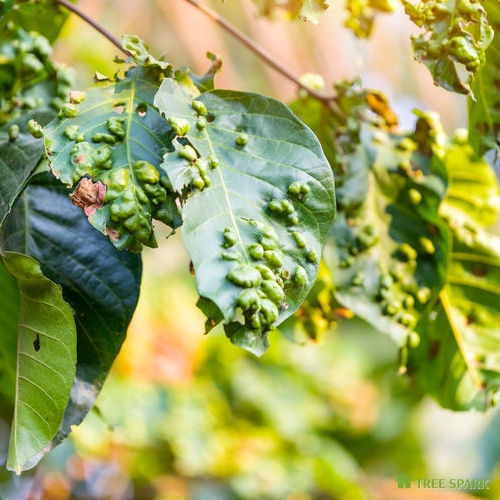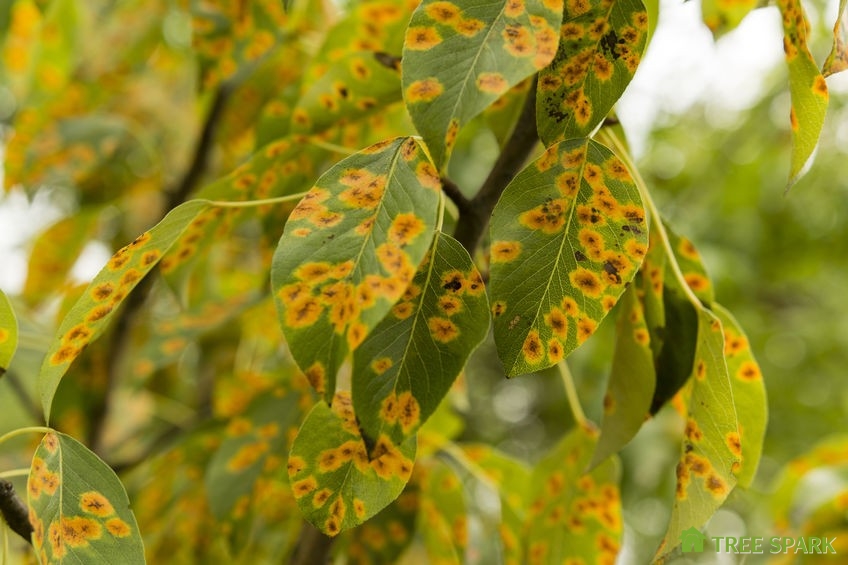
Learn More About Tree Disease
Tree care can be a rewarding process that will yield a lush landscape and a healthier environment. However, there can be cases where your tree will contract an illness and start to show elements of infection from the inside out. Tree disease can come in many forms and often will require a thorough process when trying to salvage the infected tree and area. It’s important to get into contact with your local arborists and tree company when you notice any signs of tree disease spreading around your trees. Here is some general information concerning tree disease that may be of use to you.
Can a tree get a virus?
There is a large variety of plant viruses that can spread to trees and other types of plants alike even with veggies and fruits.
How do you prevent tree disease?
A good way to prevent tree disease is with proper maintenance and care. Prune diseased branches and twigs so that the condition does not spread. On a similar note, remove any infected stumps or treat the whole area. In order to prevent further spread, rake and burn or dispose of infected fallen leaves as they can be carriers if swept by the wind. All in all, remove and destroy any infected parts and provide ample moisture to well-drained soil.
How do you fix a diseased tree?
Tree disease can be fixed when you see the first sign of it developing in the spring or early summer. Spray the affected tree or vine with a fungicide. Repeat the spraying of the area every 10 days during the growing season. In order to prevent spreading spray plants that are susceptible and are in close proximity to the diseased plants and trees.
Can tree diseases affect humans?
In most cases, tree disease will not affect humans as the bacteria, fungi, nematodes, and viruses that cause tree disease differ greatly to those which cause diseases in humans or other animals. As far as eating and touching an infected plant or parts of the plant that would not likely infect humans with the same pathogen which would cause the plant to become sick.
How does plant diseases affect human life?
Tree disease or diseases with plants will affect human life in a way that would reduce crop yields and food availability for humans. Certain fungi that come with tree disease have mycotoxins that can infect other plants but not humans. These mycotoxins, however, can have direct effects on animals and humans which can result in diseases and death.
What causes disease in trees?
Tree disease can be caused by various bacteria and viruses. One example can be Oak decline which is a complex syndrome or disorder in which damaging agents in combination, like weather damage or insect infestation, can interact to bring a huge decline to the tree’s condition.

What are some tree diseases?
- Anthracnose
- Apple scab
- Cedar rusts
- Diplodia tip blight
- Dothistroma needle blight of pines
- Lethal yellow of palm
- Oak Wilt
- Powdery mildew
- Photinia Leaf Spot
- Thousand canker disease
How are tree problems diagnosed?
Tree disease can be diagnosed by examining a tree for possible problems. It’s recommended to look at the entirety of the tree including the trunk, branches, and foliage and not just areas that show problems. For example, root issues can be a source that is influencing above-ground symptoms. This can be seen with yellow leaves which are initially caused by high soil pH or injuries made to the root.
What does a diseased tree look like?
Tree disease can show up in many forms so be sure to look for signs. One thing to pay attention to is if the ground heaving upwards, there are signs of decay, signs of fungi like mushrooms, and severed roots. Try looking around the tree’s root collar, aka the area of the trunk right above the soil. See if there are any slits in the tree, peeling or loose bark, and cracks. With the rest of the trunk see if there are any holes, cavities, swelling, and soft or decaying wood. For the canopy see if the branches are hanging low with minimal leaves or are lacking bark. If you see weak v-shaped branch unions where two branches have grown together this can be an oddity as are leaning limbs or branches. See if there are any dead sections of bark on limbs and branches that are otherwise known as cankers. If there are any leaf problems like holes, spots, deformed leaves, or odd colors this can also point to tree disease. Finally, check to see if there are excessively thick or dense canopies that can easily break.
Who can diagnose tree disease?
Tree disease can be diagnosed by specialists like arborists who are equipped with the knowledge of gauging problems, providing treatment recommendations, tree appraisals, and suggestions as to where to get tree services.
Get in Touch With a Professional Today
When you’re needing a tree disease diagnosis, count on your local tree service company for the task. Tree maintenance is a long term responsibility that will occasionally require the help of a pro in order to salvage damages. Ultimately a professional will be able to properly diagnose the tree disease that is causing issues with the condition of your trees and best recommend strategies and treatments to save it. Make a call to your local tree company for more information today.
If you need assistance with tree disease in Fort Worth, TX call (817) 717-7737 with Tree Spark!
